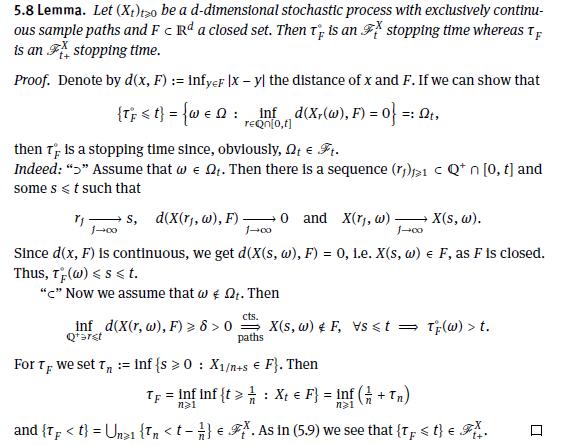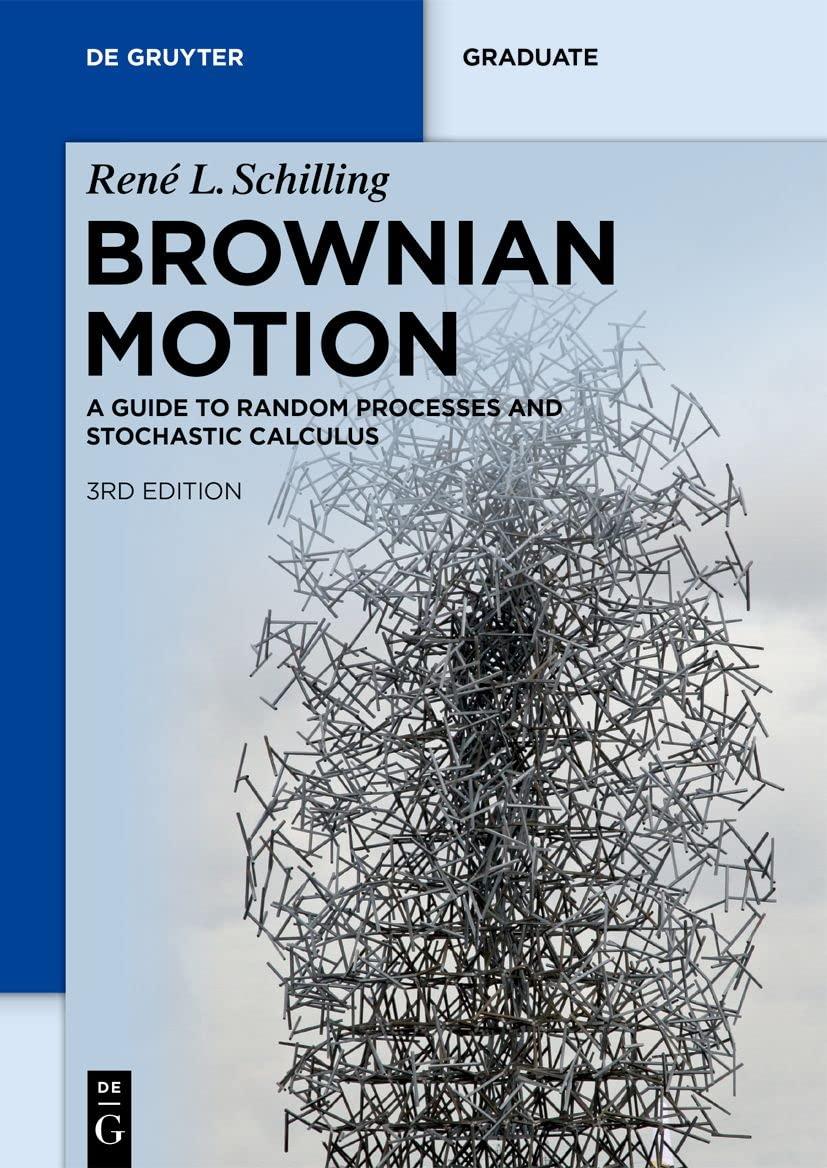Let (left(X_{t}, mathscr{F}_{t} ight)_{t geqslant 0}) be a real-valued process whose paths (t mapsto X_{t}(omega)) are (a.s.)
Question:
Let \(\left(X_{t}, \mathscr{F}_{t}\right)_{t \geqslant 0}\) be a real-valued process whose paths \(t \mapsto X_{t}(\omega)\) are (a.s.) right continuous and have finite left-hand limits (this property is often called "càdlàg"). Assume, in addition, that \(X\) is quasi left continuous, i.e. for every sequence of stopping times \(\left(\tau_{n}\right)_{n \geqslant 1}\) which increase to a stopping time \(\tau\) we have \(\lim _{n \rightarrow \infty} X_{\tau_{n}}=\) \(X_{\tau}\) a.s. on the set \(\{\tau
Approximate \(F\) by open sets \(U_{n} \downarrow F\) and show that \(\tau_{U_{n}} \uparrow \tau_{F}\). Remark. If \(X\) has continuous paths, it is also quasi left continuous. Note that quasi left continuity does not imply continuity. Even though we can take \(\tau_{n} \equiv t_{n} \uparrow t\), the \(\operatorname{limit}^{\lim _{n \rightarrow \infty} X_{t_{n}}=X_{t} \text { holds }}\) only up to an exceptional set - and this set may (and will) depend on the approximating sequence \(\left(t_{n}\right)_{n \geqslant 1}\). This means that we cannot control the exceptional sets in the left limit \(X_{t-}\).
Data From 5.8 Lemma

Step by Step Answer:

Brownian Motion A Guide To Random Processes And Stochastic Calculus De Gruyter Textbook
ISBN: 9783110741254
3rd Edition
Authors: René L. Schilling, Björn Böttcher





